(30 products available)






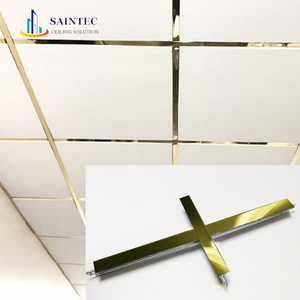
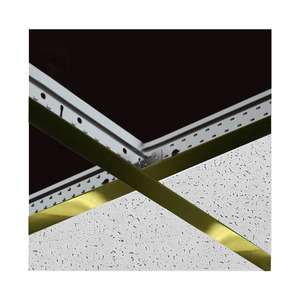

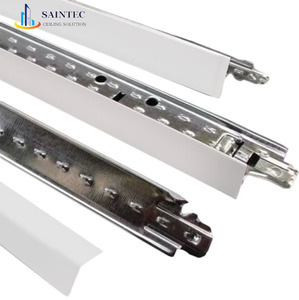
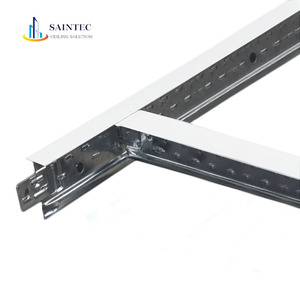
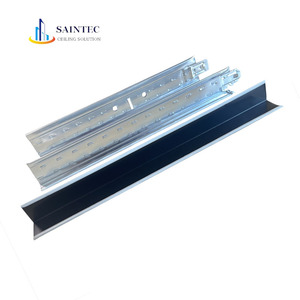
































































































































A false ceiling for laboratories is an important component of laboratory design. It serves several purposes, including providing an area to run utilities, improving lighting, and maintaining a clean environment. Various types of false ceilings can be used in laboratories, each with unique characteristics. Here are some of them:
Modular Grid Ceiling
This type of ceiling is also known as a suspended or dropped ceiling. It consists a grid of metal channels that support removable ceiling tiles. The tiles can be made of different materials such as acoustic, mineral fiber, and gypsum. A modular grid ceiling is widely used in laboratories because it offers easy access to utilities. It also provides a clean and customizable ceiling design. The ceiling tiles can be customized to improve the lighting and acoustics of the laboratory.
Gypsum Board Ceiling
A gypsum board ceiling is a non-modular false ceiling. It is a smooth and solid surface ceiling made of gypsum boards. The boards are attached to the ceiling using metal channels. A gypsum board ceiling is ideal for laboratories that require a simple and seamless ceiling design. It can be designed with different shapes and sizes. The ceiling is also easy to paint and maintain.
T-Bar Ceiling
This type of false ceiling is made of metal T-bars forming a grid that supports ceiling tiles. The T-bar ceiling is popular in laboratories because it is easy to install. It also provides a space for ventilation, lighting, and air conditioning. The tiles used in T-bar ceilings can be customized to improve the acoustic and thermal properties of the laboratory.
Acoustic Ceiling
An acoustic ceiling is designed to minimize noise and improve sound quality. It is made using tiles with sound-absorbing properties. The tiles can be made from porous materials or fibrous substances. Acoustic ceilings are ideal for laboratories that require quiet environments. For instance, laboratories that conduct research on animals.
Mineral Fiber Ceiling
This type of ceiling consists of tiles made from mineral fibers mixed with binders. The tiles are lightweight and porous. They are placed in a T-bar grid to form a false ceiling. Mineral fiber ceilings are popular in laboratories because they are cost-effective. They are also easy to maintain and provide sound insulation.
Metal Ceiling
A metal ceiling is made using tiles of galvanized steel or aluminum. The tiles are arranged in a suspended grid system. Metal ceilings are ideal for laboratories that require materials that can be washed. They are also resistant to humidity and temperature. This type of false ceiling is usually used in high-security and high-tech laboratories.
False ceilings for laboratories serve multiple functions and come with a variety of features tailored to meet the specific needs of laboratory environments. Here are some key aspects:
Function: Space Management and Aesthetics
The false ceiling helps in the spatial organization of laboratory areas. It visually defines zones without compromising the functional flow. It also contributes to the aesthetic aspects of laboratories, making them visually appealing. This is particularly important in settings that require interaction with clients or stakeholders, such as clinical laboratories.
Function: Environmental Control
False ceilings assist in the regulation of environmental components crucial to laboratory operations. For instance, they can help maintain temperature and moisture levels. Moreover, they can contribute to the effective air circulation required for cooling scientific equipment or maintaining specific laboratory temperature settings.
Function: Acoustics
False ceilings can be fitted with components that enhance sound absorption. This is vital in laboratory settings where noise control is necessary for concentration and to protect sensitive equipment.
Function: Safety and Hygiene
Laboratories require high levels of hygiene. False ceilings can be created using materials that are easy to clean and impermeable to moisture. This helps to avoid the growth of bacteria and fungi. Moreover, specific false ceilings can resist chemical degradation. They can also incorporate fire-resistant elements that enhance the safety of the laboratory premises.
Function: Utility Management
Laboratories depend on various utilities for their daily operations. These include electrical wiring, water piping, gas lines, and ventilation ducts. A false ceiling provides a means to manage these utilities efficiently. It offers a space to hide these essential components, presenting a clean and organized ceiling surface.
Additionally, a false ceiling allows for the systematic arrangement of laboratory utilities. This not only enhances the visual appeal but also ensures that the utility distribution is safe and efficient. For instance, it can prevent the risky mixing of gases or chemicals by organizing lines.
Function: Flexibility and Accessibility
Laboratories regularly change their operations and the technologies they use. False ceilings can be made versatile so that they adapt readily to changing requirements. This includes modifications in lighting, ventilation, and other utility systems. Moreover, laboratory personnel frequently need to access utilities for repairs, replacements, and routine checks. False ceilings can be designed to offer easy access points. This ensures that the maintenance of these utilities is carried out efficiently without damaging the ceiling structure or other components.
Function: Sustainability
Many laboratories are increasingly aware of the need for environmentally friendly practices. False ceilings can contribute to this by using sustainable materials that are recyclable or made from recycled components. Furthermore, false ceilings can incorporate energy-efficient lighting solutions. For example, LED panels that reduce energy use. Additionally, they can enhance the efficiency of air conditioning systems by using materials that aid in the appropriate distribution of cooled or heated air.
The primary purpose of laboratory suspended ceilings is to provide coverage for lighting, ducts, and wiring while maintaining a clean and sterile environment. Different types of laboratory ceilings serve different laboratories. Some of the scenarios where laboratory ceilings are applicable include:
Pharmaceutical Laboratories
Ceilings in pharmaceutical labs play an essential role in controlling the environmental conditions necessary for drug research and development. They help in temperature regulation, clean room construction and air filtration. Acoustic ceilings offer noise reduction and improved concentration, while fire-resistant ceilings ensure safety during pharmaceutical processes and experiments.
Medical Research Facilities
Research facilities utilize laboratory ceilings to maintain sterile environments for medical research and clinical trials. Anti-bacterial ceilings are crucial in preventing contamination. Moreover, the ceilings are integral in housing lighting, ventilation and other essential systems, ensuring optimal research conditions and enhancing operational efficiency.
Forensic Laboratories
Forensic labs require suspended ceilings to maintain controlled environments for evidence analysis and processing. Acoustic ceilings minimize noise disruptions during analysis of sensitive evidence, while laboratory ceilings regulate airflows and temperatures necessary for forensic investigations. Additionally, some ceilings are anti-bacterial and critical in contamination prevention.
Chemical Laboratories
Ceilings in chemical laboratories serve various functions, including air regulation and filtration, environmental control and noise reduction. They also enhance the operational efficiency of the laboratory by providing a platform for housing lighting, ventilation, and other essential systems. In addition, some laboratory ceilings are resistant to chemicals and spills, promoting ease of cleaning and maintenance.
Microbiology and Pathology Labs
Laboratory ceilings maintain sterile and controlled environments for specimen analysis and culturing in microbiology and pathology labs. They regulate airflows and temperatures, and some provide anti-bacterial and antiviral properties essential in contamination prevention. In addition, they can house specialized lighting necessary for microscopy and other analytical processes.
Educational and University Laboratories
Laboratory ceilings are integral in educational settings to provide environments conducive to learning and research. Acoustic ceilings reduce noise levels in classrooms and laboratory settings, promoting better concentration and learning. In addition, some laboratory ceilings are durable and easy to clean, promoting long-term maintenance and hygiene.
Food and Beverage Testing Labs
Laboratory ceilings are integral in maintaining sanitary conditions necessary for food safety testing and analysis. They regulate airflows and prevent contamination in the food and beverage testing labs. Fire-resistant ceilings are essential in ensuring safety, especially when dealing with flammable materials. Additionally, some lab ceilings are resistant to moisture and spills, promoting easy cleaning and maintenance.
When choosing a laboratory false ceiling, there are several factors to consider before making a purchase. Here are some of them:
Material
The materials used to construct laboratory false ceilings play a huge role. Choosing the right material is very important as it directly affects the performance of the lab. Different materials have different properties. Some materials are waterproof, while others are not. Some are easy to clean, while others are not. When choosing a lab false ceiling, it is important to consider the requirements of the laboratory.
Budget
The material used in laboratory suspended ceilings affects the cost. As mentioned earlier, some materials are more expensive than others. Waterproof materials are usually more expensive than standard ones. Acoustic panels are also slightly pricier than standard ceiling tiles. When choosing a lab false ceiling, it is important to consider the budget. Ensure all the requirements are within the budget.
Customization
Some laboratories have unique requirements that cannot be met by standard false ceilings. For such cases, it is important to consider a false ceiling that can be customized to meet the requirements of the laboratory. This will ensure the lab runs smoothly without any interruptions.
Installation
Another important factor to consider when choosing a laboratory false ceiling is the installation process. Some false ceilings are easy to install, while others require professional help. It is important to choose a false ceiling that can be installed easily to save on costs.
Access
In most cases, utilities are placed above the laboratory false ceilings. This makes it necessary to have access to the ceiling for maintenance and repairs. When choosing a lab false ceiling, it is important to consider the type of access that will be required. Some ceilings offer open access, while others offer partial access.
Aesthetic
Although laboratories are not known for their beauty, it does not hurt to have one that is visually appealing. When choosing a lab false ceiling, it is important to consider the aesthetics to ensure the lab looks good.
Q1: Why use a false ceiling in a laboratory?
A1: Laboratories use false ceilings to create a space above the actual ceiling. This space is useful for hiding wires, pipes, and ducts. It keeps the laboratory ceiling neat and clean. The false ceiling also helps control lights and air very well.
Q2: What materials are safe for lab ceilings?
A2: Laboratories need ceiling materials that are very strong and easy to clean. Mineral fiber is a good choice because it is durable and blocks sound. Metal ceilings work well too. They clean easily and do not get damaged. Another good material is high-density polyethylene. It lasts a long time and cannot be harmed by water or chemicals.
Q3: How high should a laboratory ceiling be?
A3: Lab ceilings need to be at least 9 feet high. This provides enough space for equipment and ventilation. Higher ceilings, like 10 to 12 feet, are even better. Taller ceilings improve air circulation. They also make laboratories feel more open and comfortable.
Q4: Can laboratory ceilings be lowered?
A4: Yes, laboratory ceilings can be lowered if needed. Using a false ceiling is the best way to do this. It allows the ceiling height to be reduced without permanent changes. Lowering the ceiling can help labs save energy. It improves heating and cooling efficiency by reducing the space that needs to be temperature controlled.
Q5: What color should laboratory ceilings be?
A5: White is the best color for laboratory ceilings. White reflects light very well and brightens the entire room. Keeping labs well-lit is important for working on scientific tasks. Some laboratories may choose light colors like cream or pale blue. Light shades also help to make the space feel lighter and more open.